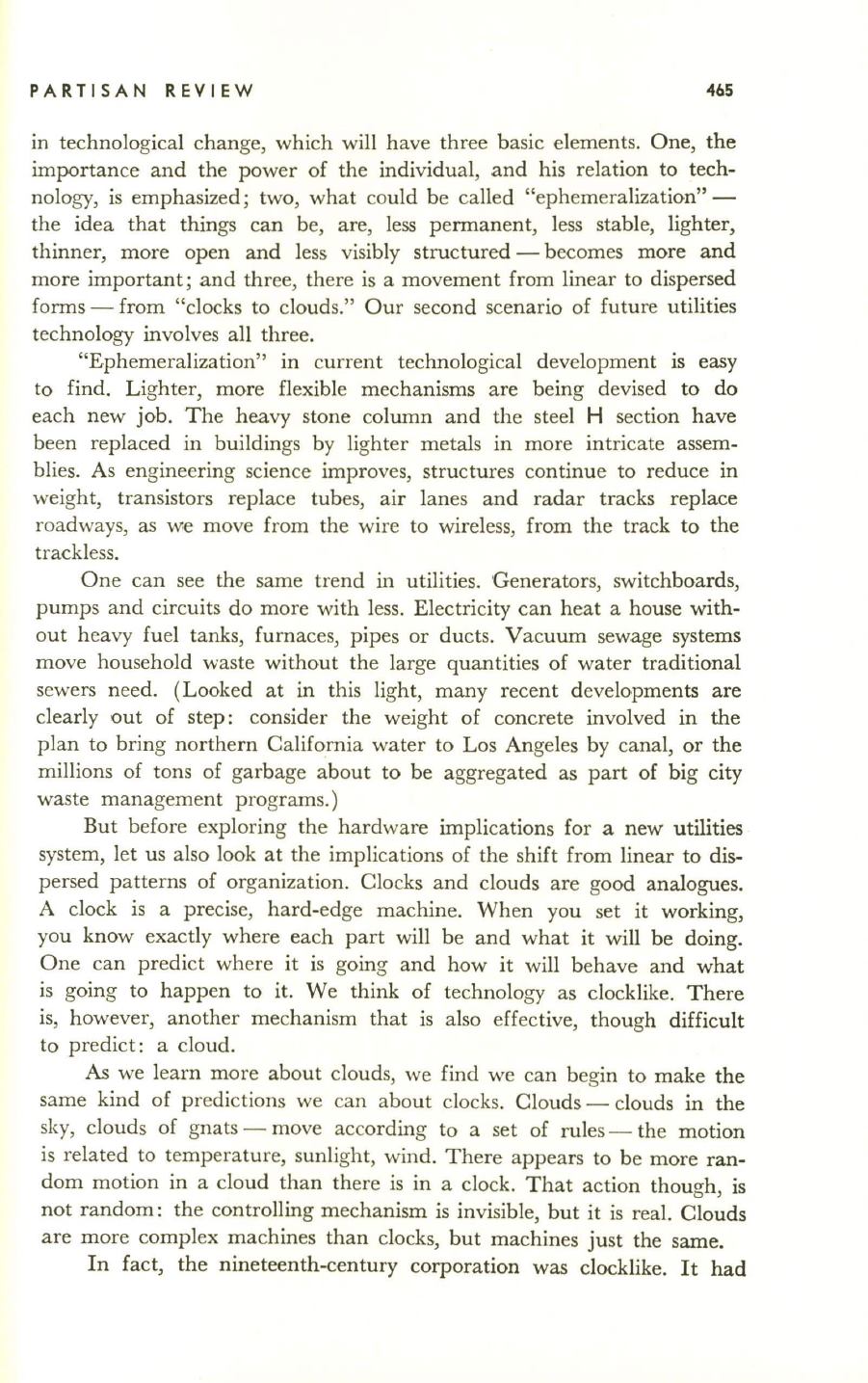
PARTISAN REVIEW
465
in technological change, which will have three basic elements. One, the
importance and the power of the individual, and his relation to tech–
nology, is emphasized; two, what could be called "ephemeralization"–
the idea that things can be, are, less permanent, less stable, lighter,
thinner, more open and less visibly structured - becomes more and
more important; and three, there is a movement from linear to dispersed
forms - from "clocks to clouds." Our second scenario of future utilities
technology involves all three.
"Ephemeralization" in current technological development is easy
to find. Lighter, more flexible mechanisms are being devised to do
each new job. The heavy stone column and the steel H section have
been replaced in buildings by lighter metals in more intricate assem–
blies. As engineering science improves, structures continue to reduce in
weight, transistors replace tubes, air lanes and radar tracks replace
roadways, as we move from the wire to wireless, from the track to the
trackless.
One can see the same trend in utilities. Generators, switchboards,
pumps and circuits do more with less. Electricity can heat a house with–
out heavy fuel tanks, furnaces, pipes or ducts. Vacuum sewage systems
move household waste without the large quantities of water traditional
sewers need. (Looked at in this light, many recent developments are
clearly out of step: consider the weight of concrete involved in the
plan to bring northern California water to Los Angeles by canal, or the
millions of tons of garbage about to be aggregated as part of big city
waste management programs.)
But before exploring the hardware implications for a new utilities
system, let us also look at the implications of the shift from linear to dis–
persed patterns of organization. Clocks and clouds are good analogues.
A clock is a precise, hard-edge machine. When you set it working,
you know exactly where each part will be and what it will be doing.
One can predict where it is going and how it will behave and what
is going to happen to it. We think of technology as clocklike. There
is, however, another mechanism that is also effective, though difficult
to predict: a cloud.
As
we learn more about clouds, we find we can begin to make the
same kind of predictions we can about clocks. Clouds - clouds in the
sky, clouds of gnats - move according to a set of rules - the motion
is related to temperature, sunlight, wind. There appears to be more ran–
dom motion in a cloud than there is in a clock. That action though, is
not random: the controlling mechanism is invisible, but it is real. Clouds
are more complex machines than clocks, but machines just the same.
In
fact, the nineteenth-century corporation was clocklike.
It
had


